What is 5 Fps Continuous Shooting
When searching for which cameras have the highest fps in burst mode, you'll want a camera with a powerful processing engine and, ideally, an electronic shutter.
It's possible to shoot sport, wildlife and other fast-moving subjects with most cameras, but some make it a lot easier than others. You might be able to get the odd great shot, but you probably won't be able to shoot a compelling action sequence that is consistently sharp unless your camera can shoot at a high frame rate in burst mode.
Frame rates are commonly referred to as fps, which means frames per second – in other words, how many images your camera can capture each second when holding down the shutter button.
What is the best camera for continuous shooting?
Traditionally, a DSLR has been the best camera for continuous shooting. Pro models like the Nikon D6 and enthusiast cameras like the Canon EOS 7D Mark II set the bar for capturing action sequences quickly without killing your buffer.
These days, companies like Sony, Olympus and Panasonic have developed mirrorless cameras that push the envelope of what's possible in continuous shooting mode. In fact, most of the options on this list of which cameras have the highest fps in burst mode are mirrorless cameras.
But as time goes on, technology advances and we're now seeing impressive continuous shooting options in smartphone cameras. Huawei, for instance, offers 20fps shooting in burst mode, and many other smartphone manufacturers aren't far behind.
So, really, the question of what is the best camera for continuous shooting these days comes down to size and how serious you are about your photography (in other words, are you a working professional or an advanced enthusiast).
If you're looking to capture sequences of your kid's football match or your dog running on the beach to complement your everyday photography, an advanced smartphone might suit your needs.
If you're looking to shoot wildlife or sport and take it very seriously, but don't want to be burdened by heavy kit, consider a mirrorless camera.
If you shoot action for a living and you've already invested in a system and own several lenses, a pro-model DSLR is probably your best bet.
These cameras have the highest fps
Which cameras have the highest fps in burst mode? At the moment we're just focusing on interchangeable lens cameras. That implies no disrespect to smartphone cameras, of course. But the reality is that most people buying a camera specifically for its continuous shooting capabilities are likely looking for something on the professional end of the market.
These are our picks for the best cameras for continuous shooting. In the near future we'll update this post with options for smartphone shooters.
For a deeper dive into the many different camera types and features available, check out our range of camera buying guides.
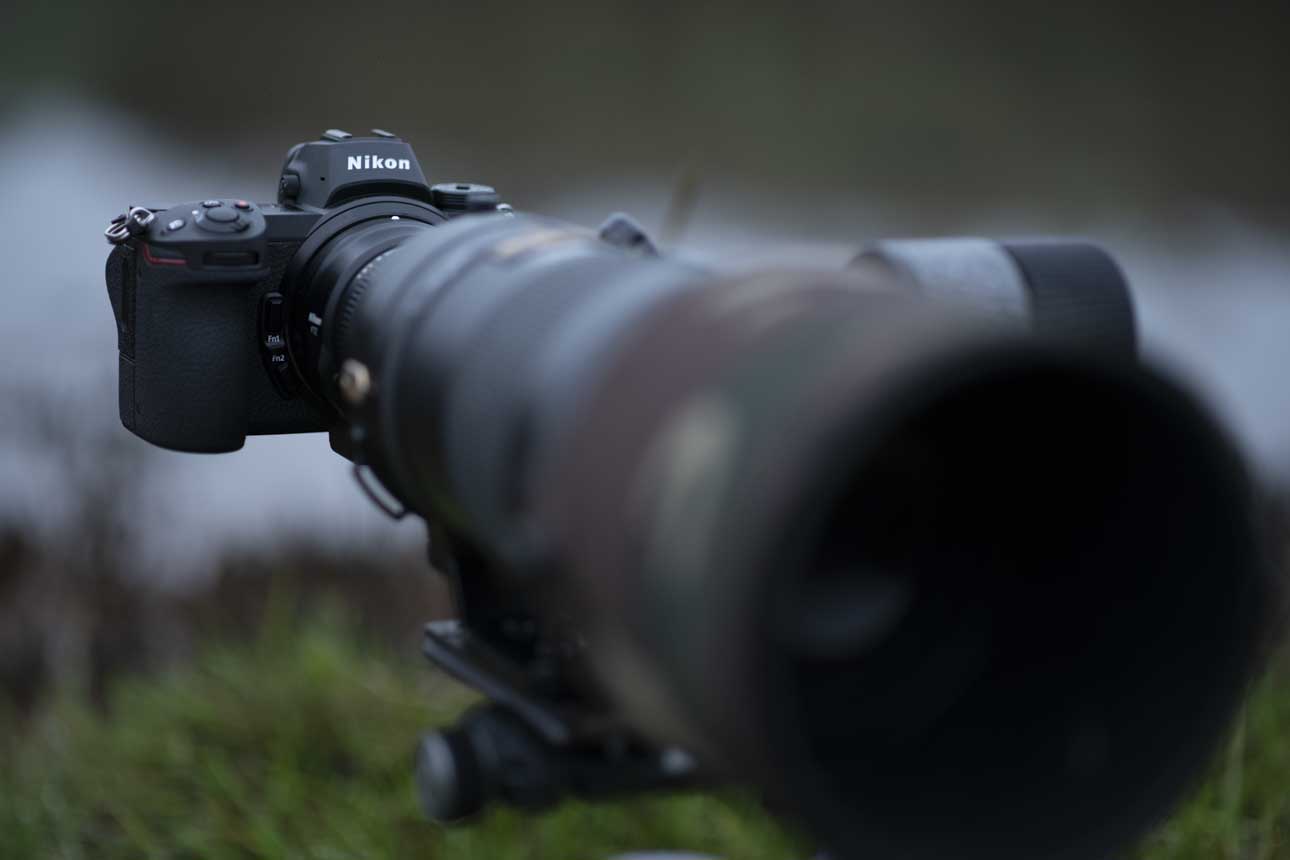
Article Name
Which cameras have the highest fps in burst mode?
Description
Which cameras have the highest fps in burst mode? These are our picks for the best cameras for continuous shooting and capturing action.
Author
Jeff
Publisher Name
Camera Jabber
Publisher Logo

Nikon Z9

Specification
- Camera type: Full-frame mirrorless camera
- Announced: 28th October 2021
- Lens mount: Nikon Z
- Sensor: Full-frame (FX 35.9 x 23.9mm) 45.7MP stacked backside illuminated (BSI) sensor
- Processing engine: Expeed 7
- Stabilisation: 5-axis sensor shift giving 6EV shutter speed compensation
- Sensitivity: ISO 64-25,600, expandable to ISO 32-102,400
- Maximum continuous shooting rate: 20fps for up to 1000+ raw (high efficiency) files or 685 raw (high efficiency *) files, 30fps for up to 1000+ normal-quality Jpegs, or 120fps normal-quality 11Mp Jpegs
- Autofocus system: Hybrid with phase and contrast detection
- Phase detection points: 493
- AF-area modes: Pinpoint (available in photo mode only), single-point, dynamic-area (S, M, and L; available in photo mode only), wide-area (S and L), and auto-area AF, 3D-tracking (available in photo mode only), subject-tracking AF (available in video mode only)
- Video resolution: 8K (7680 x 4320): 30p (progressive)/25p/24p, 4K (3840 x 2160): 120p/100p/60p/50p/30p/25p/24p, Full HD (1920 x 1080): 120p/100p/60p/50p/30p/25p/24p
- Video file format: MOV, MP4
- Video compression: Apple ProRes 422 HQ (10 bit), H.265/HEVC (8 bit/10 bit), H.264/AVC (8 bit)
- Viewfinder: 0.5-inch 3.69-million-dot, 3,000-nit OLED viewfinder
- Screen: 3.2-inch 2,100,000-dot 4-way-tilting touch-screen
- Storage: Dual XQD/CFexpress
- Dimensions (W x H x D): 149 x 149.5 x 90.5 mm / 5.9 x 5.9 x 3.6 inches
- Weight: 1340 g / 2 lb. 15.3 oz.with battery and memory card but without body cap and accessory shoe cover, Body only: 1160g / 2 lb. 9 oz.
The powerful Z9 delivers 20fps full-resolution shooting for raw files, 30fps for Jpegs and 120fps shooting at 11Mp, paired with an excellent AF system and super-sticky Eye-detection.
The ability to shoot full-resolution raw (high efficiency) files at up to 20fps comes with a burst depth at over 1000 images when an appropriate memory card is used (Nikon states the ProGrade Digital Cobalt CFexpress).
If you're happy to shoot full-resolution normal-quality Jpegs, the shooting rate can be pushed to 30fps in the new C+ mode. Alternatively, the Z9 can shoot 11Mp normal-quality Jpeg images with full AF and exposure metering capability at 120fps. These fast shooting rates can be paired with shutter speeds of up to 1/3200second.
Unusually, the Nikon Z9 doesn't have a mechanical shutter. It relies solely on an electronic shutter. However, Nikon claims that the sensor has the world's fastest scan rate for chips with over 30Mp, which means that rolling-shutter distortion (AKA the jello effect) is virtually eliminated.
Read our Nikon Z9 Review
Price when reviewed
£5299
€6299
For
- New 45.7Mp full-frame sensor sensor
- Advanced AF system
- Durable, weatherproof build
Against
- No mechanical shutter
- Firmware updates to come in 2022 to get the full video feature set
Sony A1
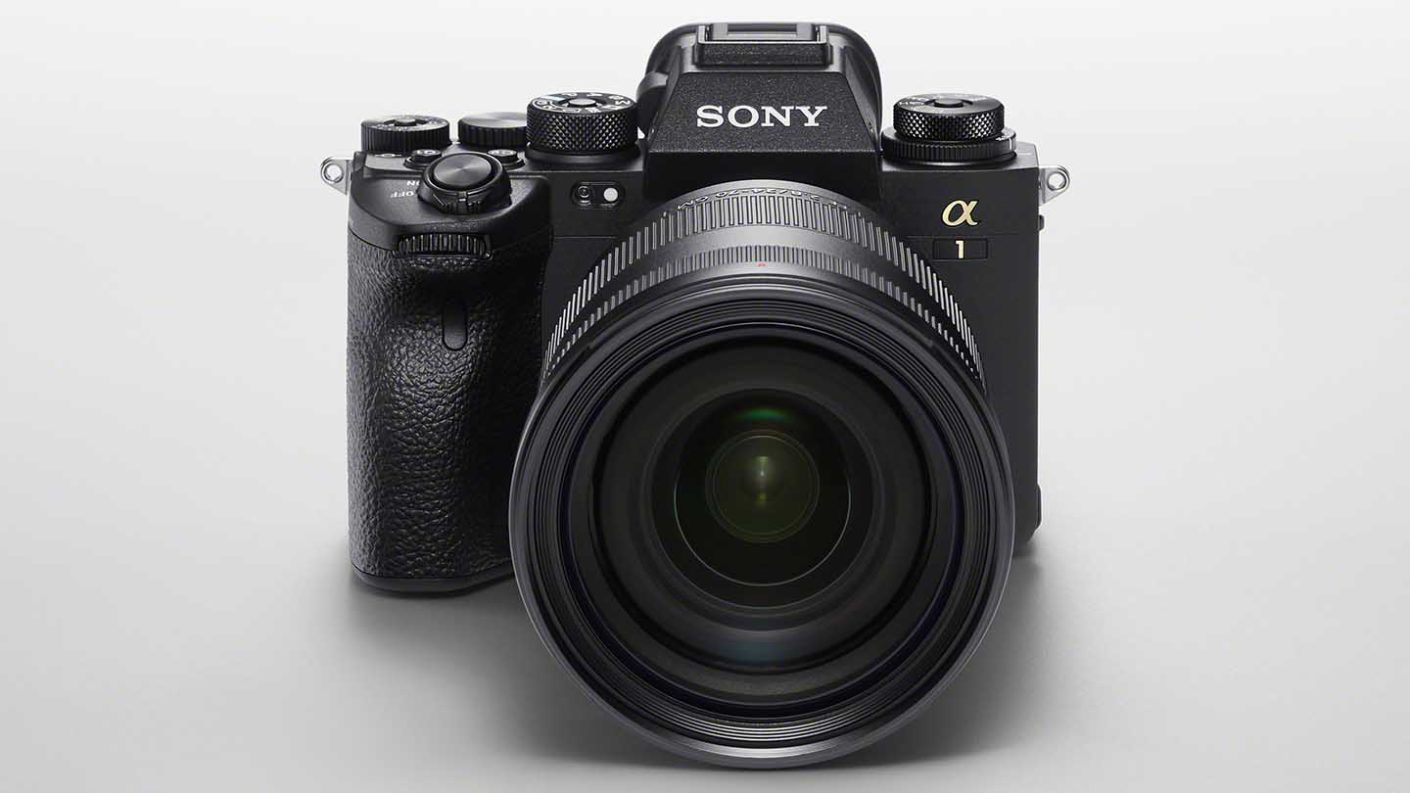
Specification
- Camera type: Full-frame mirrorless
- Sensor: 50.1Mp full frame (35.9 x 24.0mm), Exmor RS CMOS sensor
- Still Image format: Jpeg, HEIF, raw (Sony ARW 4.0)
- Autofocus system: Hybrid AF with 759 phase detection points and 425 contrast detection points, Still images: Human (Right/Left Eye Select) / Animal (Right/Left Eye Select) / Bird, Movie: Human (Right/Left Eye Select), sensitive down to -4EV
- Maximum continuous shooting rate: Mechanical shutter: 10fps, Electronic shutter 30fps
- Stills shutter speed range: Mechanical shutter: 1/8000-30sec plus Bulb, Electronic shutter: 1/32000-30sec plus Bulb
- Max flash sync speed (full-frame): Mechanical shutter: 1/400 sec, Electronic shutter: 1/200 sec
While there are cameras that can shoot at up to 60fps in certain circumstances, the 50.1Mp Sony A1 deserves special praise for its ability to combine high resolution with fast shooting.
If you need full-resolution uncompressed raw files the A1 can shoot at up to 20fps. However, if you're happy to shoot compressed raw files, or Jpegs or HEIF files, the A1 has a maximum continuous shooting rate of 30fps using its electronic shutter – with continuous AF and exposure measurement.
Furthermore, the A1 can shoot up to 155 full-frame compressed raw images or 165 full-frame Jpeg images at 30fps.
At 30fps it takes just over 5 seconds to shoot 155 files, which feels like a long blast of images in real-world conditions.
Read our Sony A1 Review
Price when reviewed
£6500
$6500
For
- Excellent combination of speed and resolution
- Great range of video features including 8K video
- Superb electronic viewfinder
Against
- It takes a while to figure out the optimum settings
- Underwhelming screen specification
- Manual switching between the Eye AF subjects
Canon EOS R5

Specification
- Camera Type: Mirrorless
- Announced: 9th July 2020
- Sensor: 45Mp Full-frame Dual Pixel CMOS AF II
- Processor: Digic X
- Lens mount: RF
- Sensitivity range: Stills: ISO 100-51,200 expandable to ISO 50-102,400, Movies: ISO 100-25600, expandable to ISO ISO 51,200
- Metering: 384-zone metering with Evaluative metering (linked to All AF points), Partial metering (approx. 6.1% of viewfinder at centre), Spot metering: Centre spot metering (approx. 3.1% viewfinder at centre), Centre weighted average metering
- Shutter speed range: 1/8000sec-30 seconds and Bulb
- File formats: Raw + Jpeg/HEIF, MP4
- Maximum continuous shooting rate: Mechanical shutter: 12fps, Electronic shutter: 20fps
- Maximum video resolution: Uncropped, internal raw recording 8K video at up to 29.97fps in 4:2:2 10-bit in Canon Log (H.265) or 4:2:2 10-bit HDR PQ (H.265), Uncropped internal recording 4K video at up to 119.88fps in 4:2:2 10-bit in Canon Log (H.265) or 4:2:2 10-bit HDR PQ (H.265) 4:2:2 10-bit in Canon Log or 4:2:2 10-bit HDR PQ, 4K output over HDMI at up to 59.94fps
- Autofocus system: Dual Pixel CMOS AF II phase detection with 5940 points in stills and 4500 points in movie mode
- Viewfinder: 0.5-inch 5.76million-dot OLED electronic viewfinder with 120fps display and 0.76x magnification
- Screen: 3.15-inch 2.1-million dot vari-angle touchscreen
- Autofocus: Dual Pixel CMOS AF II with Advanced Animal AF (recognising dogs, cats and birds) supported in all video modes with 100% coverage and up to 1053 'AF segments'
- Stabilisation: In-body image stabilisation (IBIS) that works with lens IS and enables up to 8-stops of shutter speed compensation
- Storage: Dual slots, 1x CFexpress, 1x SDXC UHS-II
- Dimensions: 135.8 x 97.5 x 88mm
- Weight: 650 g / 738 g with card and battery
Launched at the same time as the 20Mp Canon EOS R6, the 45Mp Canon EOS R5 isn't too far behind the Sony A1 in terms of resolution and it can shoot at up to 20fps with full AF and exposure function.
Like the Sony A1 and Canon EOS R6, the R5 has an excellent Eye detection system that can be used to find human or animal eyes in the frame. It also works at speed, which means you can focus on the composition while shooting at 20fps and be confident that the subject's eyes will be sharp.
Read our Canon EOS R5 Review
Price when reviewed
£4199
$3899
For
- 45Mp full-frame sensor with full AF coverage
- 12fps/20fps continuous shooting with continuous AF
- Uncropped internal 8K video recording for up to 20 minutes
Against
- 8K video will require lots of storage capacity
OM System OM-1

Specification
- Camera type: Mirrorless
- Announced: 15th February 2022
- Sensor: 20.4Mp Four Thirds Type (17.3 x 13.0mm) CMOS
- Lens mount: Micro Four Thirds
- Sensitivity range: ISO 80-102,400
- In body stabilisation: 5-axis giving up to 7EV shutter speed compensation, 8EV when combined with lens IS
- Processing engine: TruePic X
- Autofocus system: Hybrid with 1053 cross-type phase detection points and 1053 contrast detection points
- Max continuous shooting rate: Mechanical shutter: 10fps
- Pro Capture High Mode: 120fps (with Pro lenses) or 50fps AF tracking
- Max video resolution: 4K (4096 x 2160) at 30, 25, 24p(approx. 102Mbps), 60, 50p (approx. 202Mbps), 4K (3840 x 2160) 30p, 25p, 24p (approx. 77Mbps), 60, 50p (approx. 152Mbps) all in LongGOP, Full HD (1920 x 1080) 30, 25, 24p / ALL-I(approx. 82Mbps), LongGOP(approx. 22Mbps) 60, 50p ALL-I(approx. 162Mbps, LongGOP(approx. 42Mbps)
- Video format: MOV (MPEG-4AVC/H.264)
- Viewfinder: 5.76M-dot OLED
- Screen: 3-inch 1,.62M-dot vari-angle touchscreen
- Storage: 2x SD/SDHC/SDXC (UHS-II)
- Dimensions (WxHxD): 134.8 x 91.6 x 72.7mm
- Weight: 511g (body only), 599g including battery, 1 memory card but excluding the eye cup
OM System's OM-1 introduced the TruePic X image processor, which is 3x faster than the previous processing engine. Together with a new sensor it enables the OM-1 to reach a maximum continuous shooting rate of 120fps (frames per second) in Sequential Shooting SH1 or Pro Capture SH1 mode in which the focus and exposure are fixed at the start of the sequence. In Sequential Shooting SH1 mode, this rate can be maintained for up to 92 raw or Large Fine Jpeg files. There's also the Sequential Shooting SH2 and Pro Capture SH2 modes which enable rates of up to 50fps with continuous autofocus (C-AF) for up to 96 raw files or 97 Large Fine Jpegs. That's a blistering pace that should prove popular with anyone looking to capture fleeting moments.
However, it's only possible to get the 50fps shooting with full metering and autofocus operation with the company's Pro lenses, specifically the following:
M.Zuiko Digital ED 12-40mm F2.8 PRO
M.Zuiko Digital ED 12-40mm F2.8 PRO Ⅱ
M.Zuiko Digital ED 12-100mm F4.0 IS PRO
M.Zuiko Digital ED 40-150mm F2.8 PRO
M.Zuiko Digital ED 150-400mm F4.5 TC 1.25x IS PRO
M.Zuiko Digital ED 300mm F4.0 IS PRO
The Sequential Shooting SH1 and SH2 modes, and the Pro Capture modes use the electronic shutter and according to OM Systems, the fast readout speed of the new sensor means that the rolling shutter effect isn't a problem. If you want to stick with the mechanical shutter, the maximum continuous shooting rate is 10fps.
Read our OM System OM-1 Review
Price when reviewed
£2000
$2199.99
For
- High weatherproofing
- High-speed shooting capability
- Excellent subject detection modes
Against
- Four Thirds sensor is smaller than APS-C and full-frame
- Some may wish for higher resolution
- Menus not touch-sensitive
Nikon Z6 II

Specification
- Camera type: Full-frame mirrorless camera
- Announced: 14th October 2020
- Lens mount: Nikon Z
- Sensor: Full-frame (FX 35.9 x 23.9mm) 24.5MP backside illuminated (BSI) sensor
- Processing engine: Dual Expeed 6
- Stabilisation: 5-axis in-body VR
- Sensitivity: ISO 100-51,200, expandable to ISO 50-204,800
- Maximum continuous shooting rate: 14fps for up to 200Jpegs or 124 12-bit uncompressed raw files
- Autofocus system: Hybrid with phase and contrast detection
- Phase detection points: 273
- Video resolution: 4K (3840 x 2160) 30/25/24p (60P to come with free firmware update in Feb 2021), Full-HD (1920 x 1080) 120/100/60/50/30/25/24p, Slow-motion mode 1920 x 1080 30p x4/25p x4/24p x5
- Viewfinder: 0.5-inch 3.69-million-dot electronic viewfinder
- Screen: 3.2-inch 2,100,000-dot tilting touch-screen
- Storage: Dual slot 1 XQD/CFexpress and 1 SD/SDHC/SDXC
- Dimensions (W x H x D): 134 x 100.5 x 69.5mm / 5.3 x 4 x 2.8-inches
- Weight: 705g with battery and memory card but without body cap, 615g body only
Although the 24.5Mp Nikon Z6 II shares much of the same specification as the 45.7Mp Nikon Z7 II, the difference in their resolution combined with the huge processing power of dual Expeed 6 engines enables the Z6 II to shoot at up to 14fps. It can maintain that rate for up to 200Jpegs or 124 12-bit uncompressed raw files.
In comparison, the Z7 II has a maximum rate of 10fps which it can sustain for up to 200 Jpegs or 77 12-bit uncompressed raw files.
Read our Nikon Z6 II Review
Price when reviewed
£1999
€2262
For
- High-quality sensor
- Excellent user interface and control layout
- Weatherproof build
Against
- Eye detection can be unreliable in video mode
- Video Info menu not customisable
- 4K 60fps shooting will incur a 1.5x crop factor
Panasonic G9
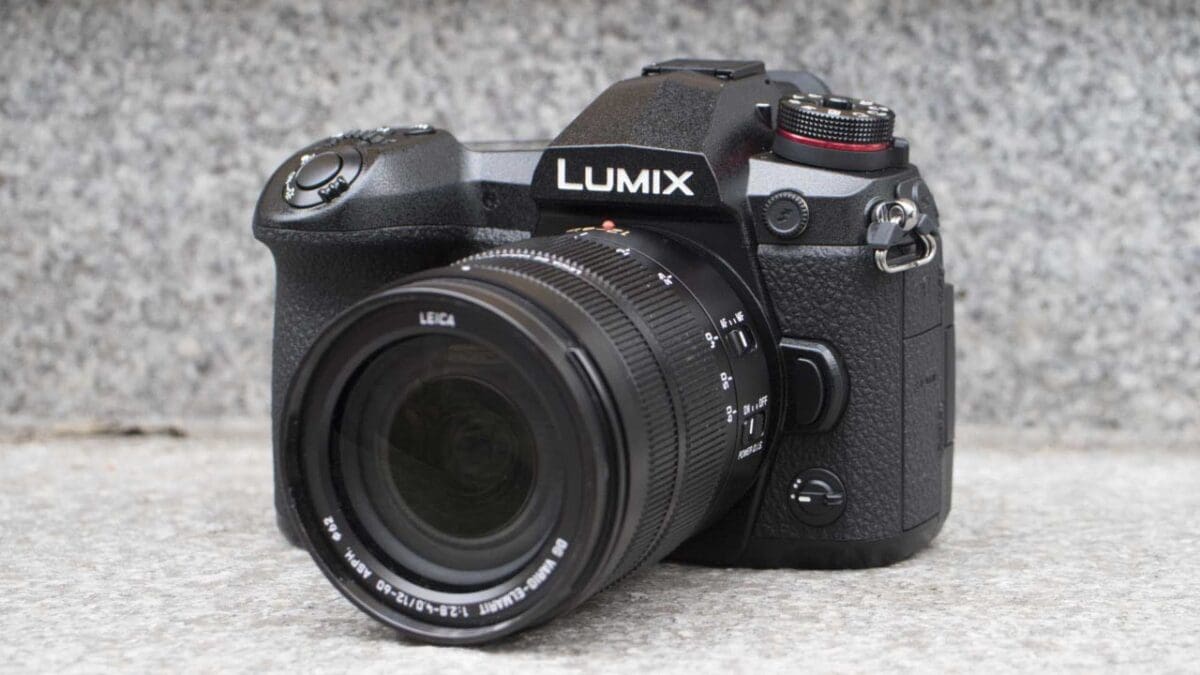
Specification
- Burst Mode (electronic shutter): 20fps with C-AF
- Burst Mode (electronic shutter): 60fps with S-AF
- Burst Mode (mechanical shutter): 9fps with C-AF
- Burst Mode (mechanical shutter): 12fps with S-AF
We've seen an escalation in continuous shooting rates recently with electronic shutters also allowing silent shooting. When the electronic shutter is in use, the G9 can shoot at up to 20fps (frames per second) with continuous autofocusing (AFC), that puts it level with the full-frame Sony A9. That's good news for wildlife photographers who don't want a clicking shutter to disturb their prey.
If you want to shoot faster still, the G9 can shoot full-resolution images at an incredible 60fps in single-AF mode, that is, with the focus set at the start of the sequence. That's good news for shooting static action like water splashes or fleeting facial expressions.
At full-pelt, the G9's buffer enables up to 50 raw files to be captured. If you switch to use the mechanical shutter, the maximum shooting rates drop to 9fps with AFC and 12fps with AFS, but the burst depth expands to 60 raw files.
In addition, Panasonic's 4K Photo and 6K Photo modes are on hand with their convenient modes to help with capturing brief bursts of action. These modes use video technology to capture sequences of images which can then be extracted to create 8Mp (4K) or 18Mp (6K) still images.
The G9 can shoot 6K Photo images at 30fps for up to 10minutes. Alternatively, 4K Photo mode can be used at 60fps for 10 minutes or 30fps for a maximum of 30 minutes. Shooting for 10 minutes at 60fps produces a lot of 8Mp images!
Read our full Panasonic G9 review
Price when reviewed
£1499
For
- As fast as the Sony A9
- Excellent buffer
- Superb EVF and screen
- Stabilisation system rated at 6.5EV
- Weather-sealed
Against
- Four Thirds sensor
- 400-frame battery life
- Oddly positioned joystick
Olympus OM-D E-M1X
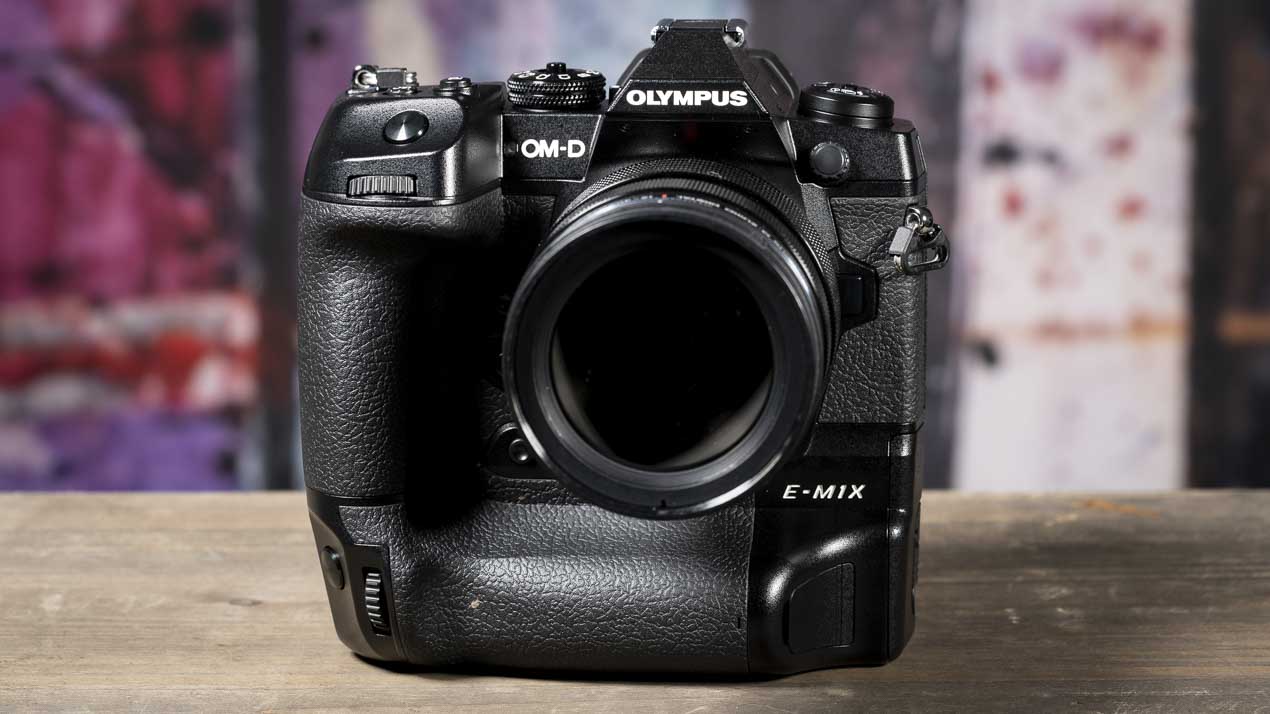
Specification
- Camera type: Mirrorless
- Sensor: 20.4Mp Four Thirds Type (17.3 x 13.0mm) CMOS
- Lens mount: Micro Four Thirds
- Sensitivity range: ISO 64-25,600
- Processing engine: 2x TruePic VIII
- Autofocus system: Hybrid with 121 cross-type points (800 in magnified view)
- Max continuous shooting rate: 18fps with AF tracking, 60fps with AF locked on first frame with electronic shutter
- Pro Capture High Mode: 60fps
- Pro Capture Low Mode: 18fps
- Burst Mode in S-AF: 15fps for 143 raw files
- Burst Mode in C-AF: 10fps for 283 raw files
- Max video resolution: 4K (4096 x 2160) at 24p
- Viewfinder: Electronic with 2,360,000 dots
- Screen: Touch-sensitive vari-angle 3-inch LCD with 1,037,000 dots
- Storage: 2x SD/SDHC/SDXC (UHS-II)
- Dimensions (WxHxD): 144.4 x 146.8 x 75.4mm
- Weight: 849g (body only), 997g (including 2 batteries and memory cards)
The OM-D E-M1X is a doubled-gripped mirrorless camera. It uses Olympus's Pro Capture mode for shooting stills of very fast action. Thanks to the dual processors, there's also no blackout in the viewfinder when this is in action.
In Pro Capture High mode, the shooting rate is 60fps, but the focusing is fixed at the start of the sequence. Switch to Pro Capture Low, and you can shoot at 18fps with continuous focusing.
Pro Capture mode is designed to help you record fleeting moments that are easily missed. To that end, when it's activated the camera starts writing images to the buffer as soon as the shutter release is half-pressed. Once the shutter button is pressed fully, the 35 images that were buffered immediately before it was pressed are recorded along with 100 from immediately after.
There's also a standard sequential shooting mode that uses the mechanical shutter. When this is in action, the maximum shooting rate in single AF mode is 15fps for 143 raw files. In continuous autofocus mode, the maximum is 10fps for 283 raw files.
A High Res Shot mode also delivers larger and more detailed images. The 50Mp Handheld mode captures the images quickly but then takes a little longer to render the final shot than the Tripod mode. Comparing the results with standard images reveals a nice jump in the level of detail.
Similarly, the 80Mp tripod mode delivers impressive results. It gives a significant boost to the size of print that you can make. That compositing also has a beneficial effect on the dynamic range as there's more detail visible (and extractable) from the shadows.
Read our Olympus OM-D E-M1X Review
Price when reviewed
£2199
$1999
For
- One of the fastest cameras you can buy
- Pro Capture Mode offers lots of flexibility
- High Res Shot mode is very impressive
Against
- It's very big and heavy for a Micro Four Thirds camera
- Four Thirds sensor
- Need more smaller, lighter, more affordable long telephoto lenses
Sony A9

Specification
- Sensor: 24.2-megapixel full-frame sensor
- AF system: 693-point wide area phase detection AF
- Burst Mode in C-AF: 20fps
- Raw Files at 20fps: 241
The Sony A9's 24.2-megapixel full-frame sensor's integral memory works in tandem with the Bionz X processor to enable faster data readout. As a consequence the Sony A9 has a full resolution maximum continuous shooting rate of 20fps (frames per second), that's with continuous autofocus and metering.
That blistering pace can be maintained for up to 241 raw files or 362 jpegs – equating to roughly 12 seconds shooting continuously in raw format or 18 seconds in jpeg format.
So you should able to capture every fleeting expression on a top-class 100m sprinter's face from the gun firing to the finish line and still have some capacity for the winner's celebration.
In continuous AF mode the A9 is quick to latch onto moving subjects and it follows them with apparent ease. Angela, our reviews editor, normally shies away from settings that give a camera free rein to determine the AF point to use, but the A9 performed superbly in Wide AF mode even when there was a cluttered background such as cliffs or rocks behind the moving birds.
When she was using continuous AF mode to photograph my dog on the beach, She noticed that if he was still the camera sometimes focused on a point a little closer to her than he was, but as soon as he started moving it snapped onto him. If he ran towards her his head got the AF system's attention; if he ran away it was his backside.
Find the latest deals on the Sony A9 at Amazon UK and Amazon US.
Read our Sony A9 review
Price when reviewed
£3399
$2998
For
- Fast, clever AF system
- Superb EVF
Against
- Needs more fast, long lenses
Nikon D6
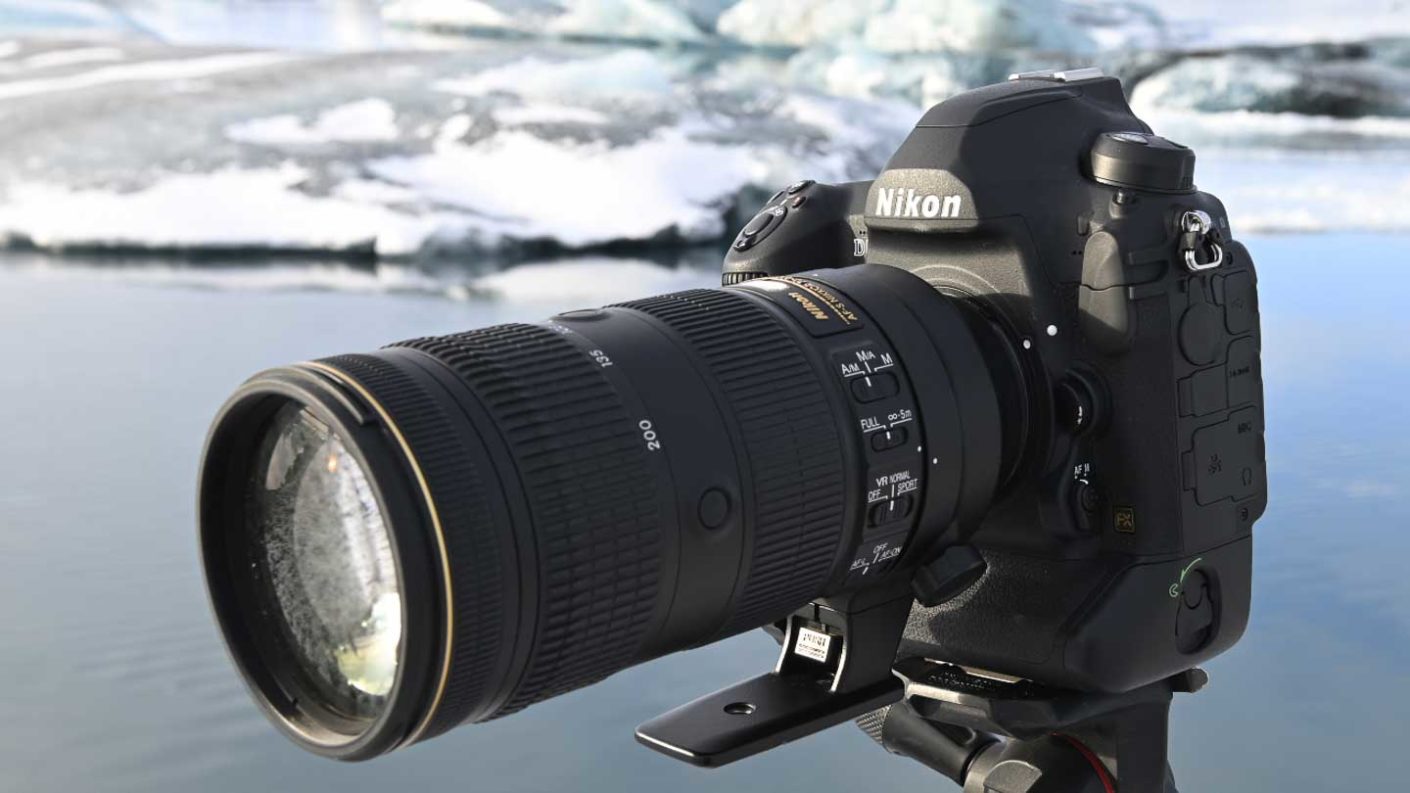
Specification
- Camera type: DSLR
- Sensor: 20.8Mp full-frame (35.9 x 23.9mm) CMOS
- Processing engine: Expeed 6
- Continuous shooting: Up to 14 fps, Continuous Low: 1 to 10 fps, Continuous High: 10 to 14 fps, Quiet: 1 to 5 fps
- Shutter speed: 1/8000 to 30sec, Bulb; Time; X250
- Autofocus system: Viewfinder: TTL phase-detection with 105 focus points, all cross-type, 15 at f/8, Live view: Contrast-detect AF, focus point selected by camera when face detection or subject-tracking is used.
The Nikon D6 doesn't make a dramatic upgrade on the D5, but one aspect that it improves upon is the continuous shooting rate, or at least the usability of that rate.
Like the Nikon D5, the D6 has a maximum shooting rate of 14fps. However, in a significant upgrade, the D6 retains full autofocus and exposure functionality at 14fps. With the D5, the has to be locked up and focus and exposure are fixed at the start of the sequence to achieve the 14fps rate.
If you need a fast shooting rate with continuous autofocusing and exposure measurement with the D5, you have to opt for 12fps.
A 2fps increase in the shooting rate with AF and exposure measurement may not sound much, but it could be helpful for very fast action and fleeting moments in sport.
Read our Nikon D6 Review
Price when reviewed
£6299
$6496.95
For
- 14fps shooting with continuous focusing
- Superb AF system for use with the viewfinder
- Great low-light performance
Against
- Contrast detection AF in Live View and video mode
- Fixed screen is frustrating in Live View mode
- Huge price
Canon EOS-1D X Mark III
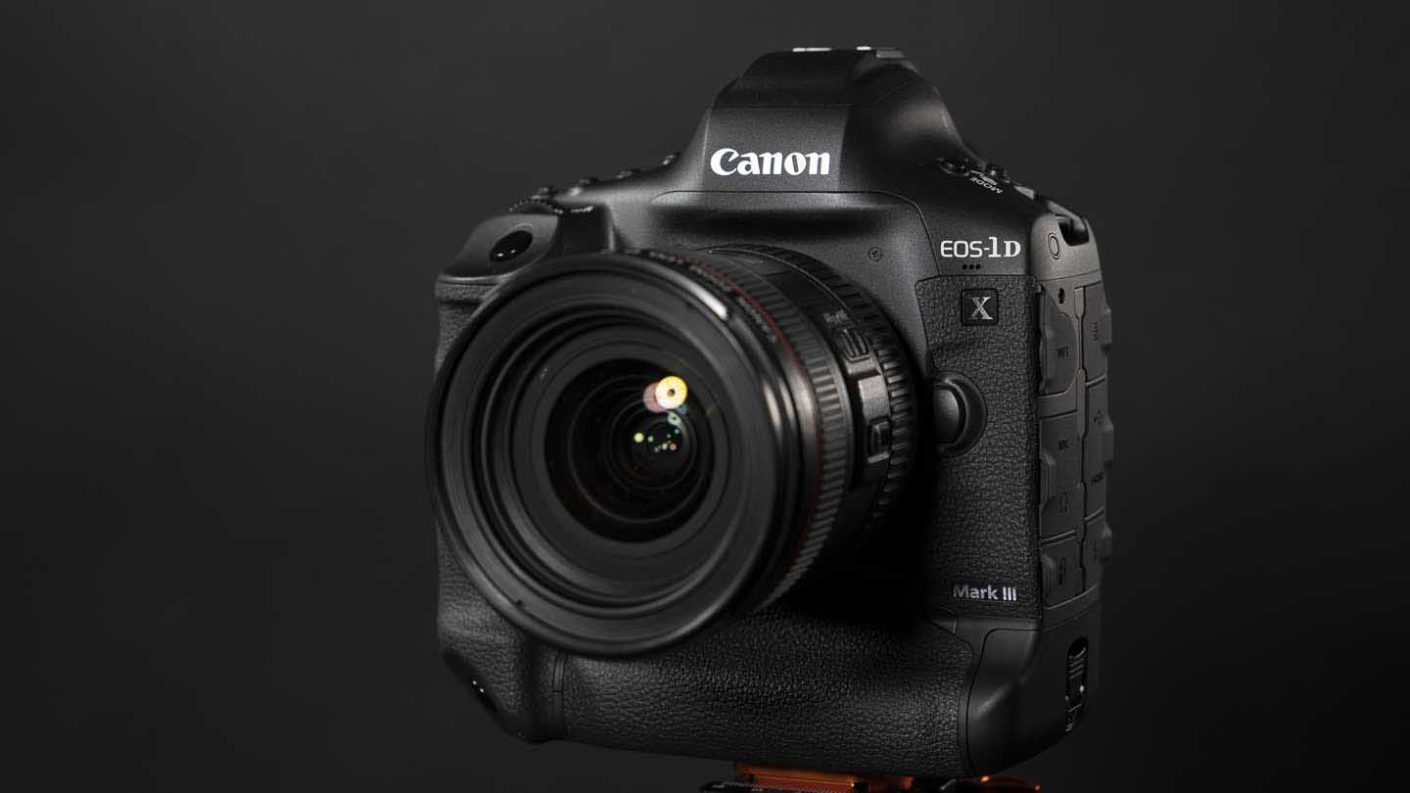
Specification
- Camera type: DSLR
- Announced: 7th January 2020
- Sensor: Full-frame (24x36mm) 20.1Mp CMOS
- Lens mount: Canon EF
- Processing engine: Digic X
- Sensitivity range: Stills: 100-102400, expandable to ISO 50-819,200, Video: ISO 100-25600, expandable to ISO 100-204,800
- Autofocus system: Viewfinder: phase detection with 191 points, 155 cross-type AF at f/4 including 1 dual cross type at f/2.8, Live View: Dual Pixel CMOS AF with Face+Tracking and 3,869 points
- Max continuous shooting rate: Viewfinder: 16ps, Live View: 20 fps with mirror locked up with exposure and AF tracking
- Max video quality: 4K raw (5496x2904) at 23.98, 24, 25, 29.97, 50, 59.94fps, 4K DCI (17:9) 4096x2160 at 23.98, 24, 25, 29.97, 50, 59.94fps intra or inter frame
- Viewfinder: Optical, pentaprism type with 100% coverage, 0.76x magnification and 20mm eyepoint
- Screen: Fixed 3.2-inch / 8.01 cm TFT with 2,100,000 dots
- Storage: Dual CFexpress 1.0 Type B
- Dimensions (W x H x D): 158 x 167.6 x 82.6mm
- Weight: 1250g body only
In Live View mode, the Canon EOS-1D X Mark III can shoot at up to 20fps with continuous focusing. Alternatively, if the viewfinder is in use, the camera can shoot at up to 16fps.
Impressively, the 1D X Mark III can shoot at those high rates for over 1000 raw files or until the memory card is full with Jpegs.
It's also worth remembering that the 1D X Mark III has Canon's excellent Dual Pixel CMOS AF system which means its focusing is quick and effective in Live View mode, it's capable of keeping up with fast-moving subjects.
Read our Canon EOS-1D X Mark III Review
Price when reviewed
£6499
$6499
For
- 16/20fps continuous shooting with a massive burst depth
- Excellent AF system
- Great new Smart Controllers
Against
- Huge price
- Fixed screen is frustrating in Live View and video mode
- Big and heavy
Canon EOS 5D Mark IV
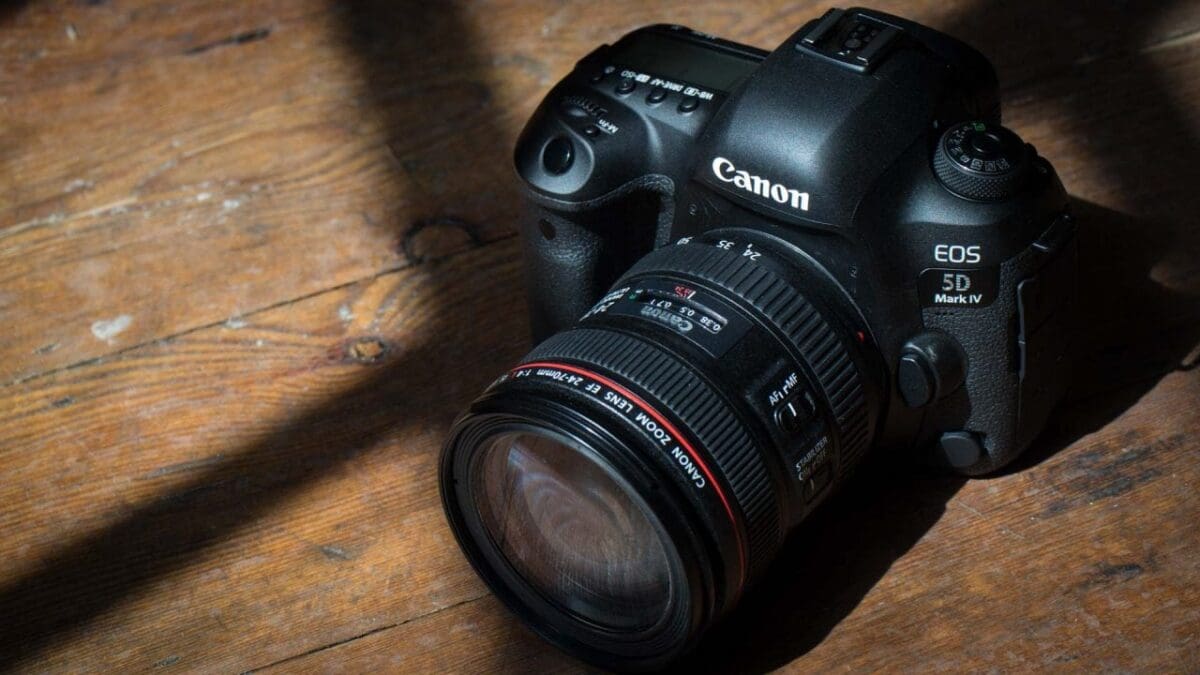
Specification
- Camera type: DSLR
- Announced: 25th August 2016
- Sensor: Full-frame (36 x 24mm) 30.4Mp CMOS
- Processor: Digic 6+
- Lens mount: Canon EF
- Autofocus system: Viewfinder: 61 points with a maximum of 41 cross-type points including 5 dual cross type at f/2.8 and 61 points with 21 cross-type points at f/8, Live View: Dial Pixel CMOS AF
- High-Speed Continuous Shooting Mode: 7fps
- Low-Speed Continuous Shooting Mode: 3fps
- Silent Continuous Shooting: Mirror raised slowly for less noise
- Maximum video resolution: 4K (17:9) 4096 x 2160 at 29.97, 25, 24, 23.98 fps
- Viewfinder: Pentaprism optical with 100% coverage
- Screen: 3.2-inch Clear View LCD II with 1,620,000 dots
- Storage: Dual: 1x CompactFlash and 1x SD/SDHC/SDXC
- Dimensions: 150.7 x 116.4 x 75.9mm
- Weight: 800g
Canon's EOS 5D range of DSLRs has been popular with advanced enthusiasts and professionals looking for something which can cope well with a range of different subjects. The most recent in the line, the Mark IV, has a collection of useful features that make it well suited to demanding photographers.
While the 5D Mark III offered 22.3 million effective pixels, the Mark IV has 30.4 million, marking a significant jump up in resolution.
However, the inclusion of Digic 6+ processing technology enabled Canon to push the Mark IV's native sensitivity range up from ISO 100-25,600 to ISO 100-32,000, with expansion settings taking this to ISO 50-102,400 – the same as the 5D Mark III. In video mode sensitivity can be set in the range ISO 100-102,400.
Interestingly, the Canon EOS 5D IV has dual processors, as the Digic 6+ unit is accompanied by a Digic 6 processor. The Digic 6 processor takes care of the exposure metering while the Digic 6+ engine takes care of image capture and processing.
It enables a maximum continuous shooting rate of 7fps (frames per second) with continuous autofocus and metering for up to 21 raw files or an unlimited number of jpegs. In live view mode the camera can shoot at up to 4.3fps.
Canon hasn't given the 5D Mark IV more autofocus points than the 5D Mark III, but the 61 points are spread further up and down the frame. Also as before, there are 41 cross-type points; however, 21 of them are cross-type down to f/8 (rather than f/4).
There are also 5 dual cross-type points that are sensitive down to f/8 (with the 5D Mark III these are dual cross-type at f/2.8). The system also operates down to -3EV, 1EV darker conditions than the 5D Mark III's system. This all adds up to make the Canon 5D Mark IV's autofocus system more sensitive and better able to detect a subject.
Videographers have long enjoyed using the 5D range, and to that end, the Mark IV is capable of recording 4K video and has a range of useful video functions.
Find the latest deals on the Canon EOS 5D Mark IV at Amazon UK and Amazon US.
Read our Canon 5D Mark III review
Price when reviewed
£1799
$2499
For
- 30Mp full-frame sensor
- ISO 100-32000 (expands to 50-102400)
Against
- Touchscreen is fixed
- 4K video for internal recording only
- Canon EOS 5D Mark IV
- Nikon D5
- Olympus OM-D E-M1X
- Panasonic Lumix G9
- Sony A9
Source: https://camerajabber.com/buyersguides/which-cameras-have-the-highest-fps-in-burst-mode/
Post a Comment for "What is 5 Fps Continuous Shooting"